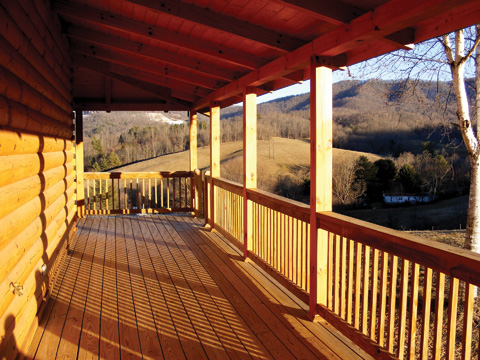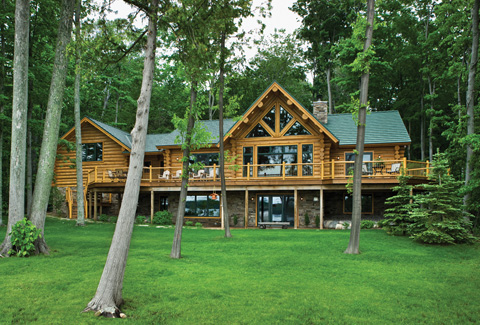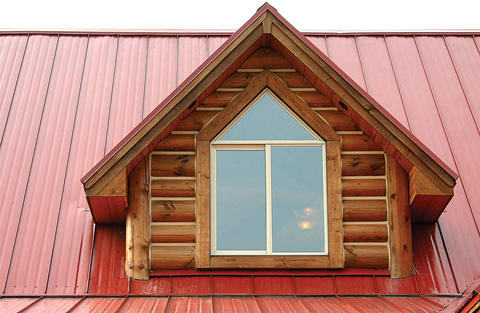Low-Maintenance Log Finish: A Closer Look
By Wyatt Myers
When it comes to a finish for your log home, you have a choice between a film-building finish that lies on top of the wood and a penetrating finish that soaks into the wood. Although the film-building finish can last longer initially, Sjoerd Bos, vice president of Sansin Corporation in Ontario, Canada, prefers the penetrating finish for a couple of reasons. First, it is much easier to apply and maintain—you just wash, clean, and reapply. Second, a penetrating finish is more sustainable because it is easier to maintain color and clarity than with a film-building finish that tends to get thicker and lose clarity with maintenance coats.

As for whether to buy an oil-based product or a water-based product, Bos says that water-based finishes have come a long way. And for log homes, where the moisture content is highly variable, you can typically expect greater penetration and overall better results from a water-based penetrating finish. (It is more difficult for oil-based finishes to penetrate wood with a higher moisture content but they penetrate well into dryer woods.)
To help a penetrating finish last even longer, Rich Dunstan, the owner and president of Perma-Chink Systems, Inc., recommends choosing a finish that is pigmented, or richly colored. “It’s the pigments that do the majority of the work protecting the underlying wood from the effects of UV exposure,” he says.
To give finishes even greater protection, Perma-Chink makes a protective topcoat that goes on the wood after the penetrating stain is applied.
Regardless of the finish you choose, preparing the wood properly for finishing with sanding and cleaning, as well as applying the finish properly, is the key to a great-looking, long-lasting log home finish.

Maple Island Log Homes/photo by Roger Wade
Storing Heat from the Sun
By Jennifer Donohue
There are many ways to store the heat from sunlight that enters your home, including stone floors and masonry interior walls. Another way people are choosing to capture that heat is through the use of Trombe walls. Trombe walls are named after Felix Trombe, the French engineer who developed them. The technique is to build a portion of the south wall of the home with a high thermal mass material such as concrete, then cover and seal it with a pane of glass a few inches from the surface of the wall on the exterior of the home. Sunlight that passes through the glass is trapped and absorbed by the wall. That heat is then radiated into the home as the temperature drops overnight. Trombe walls are more effective in the summer than windows alone, and are ideal for areas of the house where you won’t miss the windows.

